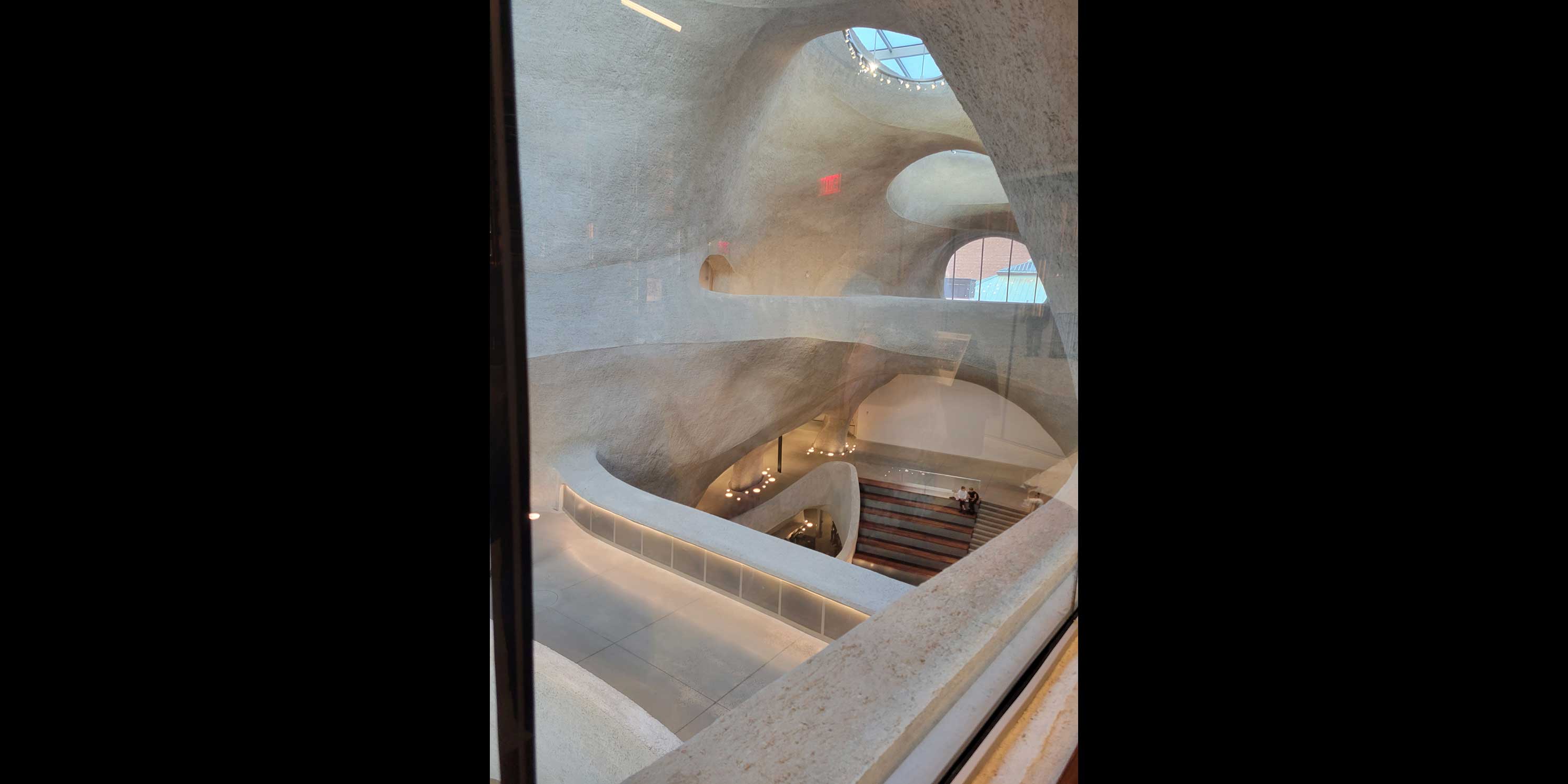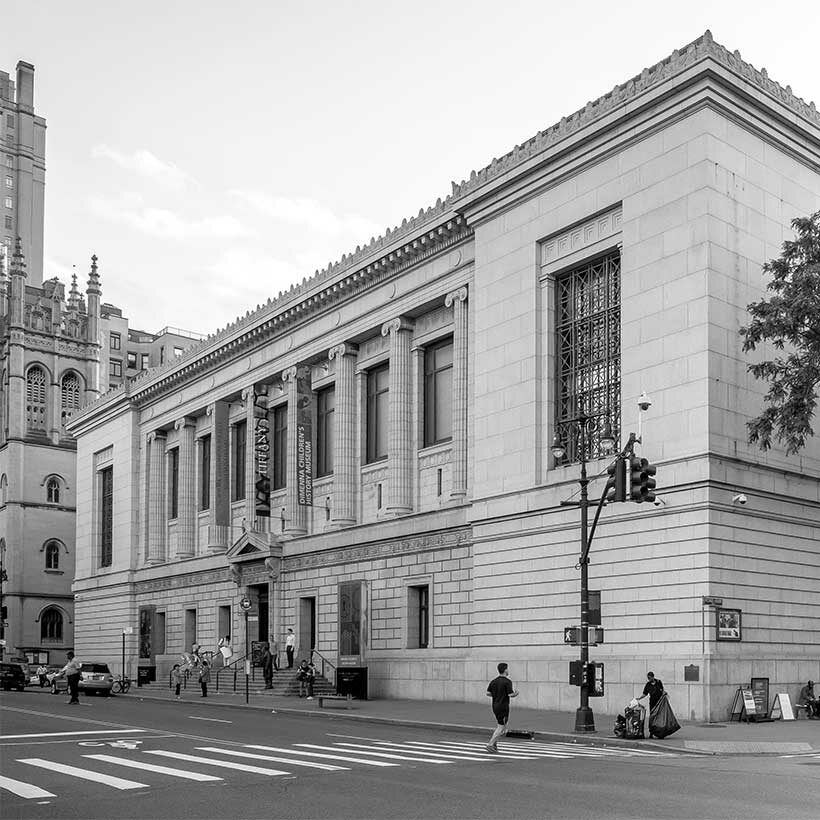President’s Letter: July 2023
Monthly observations and insights from MAS President Elizabeth Goldstein
I was grandparent-in-tow on a recent visit to the American Museum of Natural History. We started in the new bug exhibit, which fascinated all of us, but especially Loretta, who is unafraid of any bug, no matter how creepy it is to the rest of us. Enormous cockroaches, anyone? My eldest grandchild, Cohen, is 10 years old, and a dinosaur aficionado, and I don’t just mean a little. He has read every adult book on the subject in his local library in Santa Fe, New Mexico. As I walked around with him, he would look at some of the drawings of dinosaurs and say that drawing is wrong. The spines would have pointed this way or that. He can prove it too!
The rest of the party grew weary of the gigantic bones and wandered off to get in line for the Rose Planetarium, which I still want to call the Hayden Planetarium. But Cohen was hooked. My husband had arranged for him to meet the head of the docent corps the next day and off they went for another two hours of back-of-house exploration.
I grew up going to this Museum from a very early age. I know I am not alone, and millions of New Yorkers have shared my experience of holding my first snake, going off into space, or staring with big eyes at gems or dinosaur bones.
It wasn’t until I started thinking about this piece that I came across a funny coincidence though. The very first location for the Museum was at the Arsenal in Central Park. I worked in that building in the 1980s on the same floor where the fossils, mammals, and fish and birds were kept during the Museum’s first incarnation!
So, I was excited to see the new Richard Gilder Center for Science, Education, and Innovation at the American Museum of Natural History and it is hard not to be wowed. First of all, on a practical level, it is really nice to be able to access the Museum on the western side. It is a super block, after all.
But the Gilder is a significant new addition to the mishmash of architectural eras and styles that is the Natural History Museum. It has always been a wonderful old heap, but let’s face it, not architecturally coherent. So, the question for me was: did it feel like just another different thing or does it add something to understanding the whole?
In the end, it is a very different style, but its very contrast seems to be the thing that works. It feels like a very modern welcome as compared to the stately stairs and dark enveloping entry hall on the Central Park West façade. I also think the connectivity of the ribbon of park around the western and northern sides works to cool and blend the different architectural styles of the Museum as a whole.
The interior atrium is open to the park outside and the sky above and is wrapped by awe-inspiring exhibitions on the aforementioned insects, gems, and many other treasures. These museums often started with very different ideas than we have now, more colonial and acquisitive than our current views reflect. These new displays are accessible for those with many different levels of knowledge and inquisitiveness.
Studio Gang designed the building, and I had an opportunity to tour the building with members of their team, Weston Walker and Anika Schwarzwald, several weeks ago. The entry hall is clearly inspired by natural forms—a cave, rock formations. Jeanne Gang says they looked at the forms created by melting blocks of ice. I find its forms to be also reminiscent of bones from an ancient being. (Maybe that is my grandson talking!)
As I walked through the building with other guests that night, I saw spaces that I didn’t see on my earlier visit, the new library for instance. It is a stunning combination of historically-inspired library cabinets on one long wall and a mushroom form in the center of the space anchoring the spacious, unstuffy reading room.
The storage facilities are visible through a glass wall so you can see scientists coming and going to collect or return some of the 35 million artifacts the Museum owns. We also saw the classrooms designed for sharing the Museum’s knowledge and hopefully sparking the curiosity of many generations to come. All of this makes this new building a fantastic place where the work of a museum like this comes together, from the scientific to the educational, with human wonderment. It is this embrace of the many modern facets of what a natural history museum should be that makes it all so moving. The architecture is a vessel that highlights the use and deepens it.
When MAS opined on this new addition to the Museum, we were concerned that it was removing a building that had just been added in 2000. We called on the Museum to create a master plan that ensured that this addition would accommodate future program needs. The uneasy balance between parks and museums that can be witnessed in Central Park and here at Theodore Roosevelt Park is tricky to say the least. The institutions contribute so much to our civic life through their collections and their deep educational programs. However, so are the parks they might impinge on. I think this addition succeeds in striking a good dialogue with the park, in part because it feels like it is a natural form itself. It is clear that there has been sensitive attention paid to the trees and the landscape. Evidence of this is the fact that it feels like it has always been there, just the way it is.
This is a special new addition to New York City. Please go and enjoy it!

Elizabeth Goldstein
President, Municipal Art Society of New York








